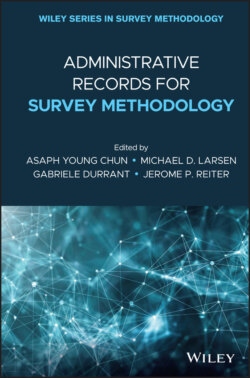Читать книгу Administrative Records for Survey Methodology - Группа авторов - Страница 36
2.3.2 SIPP–SSA–IRS (SSB) 2.3.2.1 Data Description
ОглавлениеThe SIPP/SSA/IRS Public Use File, known as the SIPP Synthetic Beta File or SSB, combines variables from the Census Bureau’s SIPP, the IRS individual lifetime earnings data, and the SSA individual benefit data. Aimed at a user community that was primarily interested in national retirement and disability programs, the selection of variables for the proposed SIPP/SSA/IRS-PUF focused on the critical demographic data to be supplied from the SIPP, earnings histories going back to 1937 from the IRS data maintained at SSA, and benefit data from SSA’s master beneficiary records, linked using respondents’ SSNs. After attempting to determine the feasibility of adding a limited number of variables from the SIPP directly to the linked earnings and benefit data, it was decided that the set of variables that could be added without compromising the confidentiality protection of the existing SIPP public use files was so limited that alternative methods had to be used to create a useful new file.
The technique adopted is called partially synthetic data with multiple imputation of missing items. The term “partially synthetic data” means that the person-level records are released containing some variables from the actual responses and other variables where the actual responses have been replaced by values sampled from the posterior predictive distribution (PPD) for that record, conditional on all of the confidential data. From 2003 until 2015, seven preliminary versions of the SSB were produced. In this chapter, we will focus on the protections that pertain to the linked nature of the data. The interested reader is referred to Abowd, Stinson, and Benedetto (2006) for details on data sources, imputation, and linkage. The analysis here is for the SSB version 4. Since version 4, two additional versions have been released with slightly different structure.3 Subsequent versions are well-illustrated by the extensive analysis described here.
